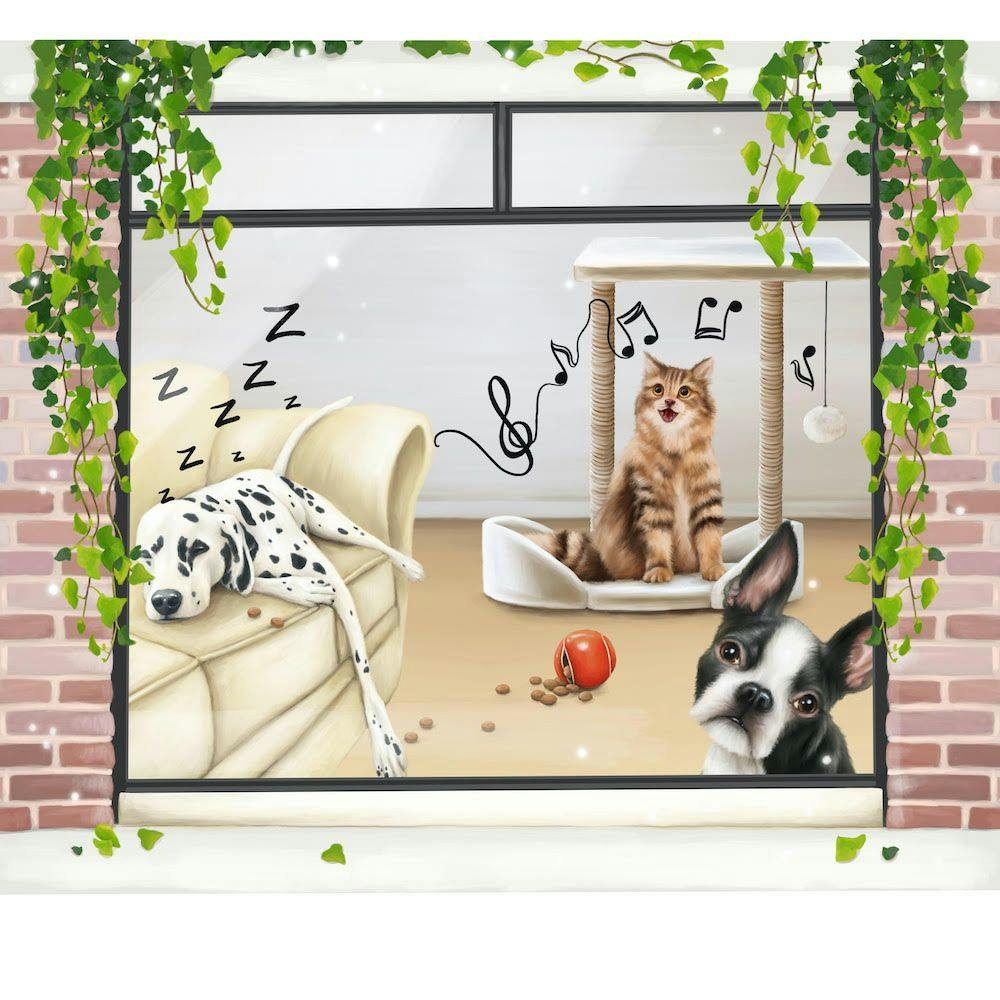How to support a pet with separation anxiety
updated on Apr 3, 2021

Animals can experience anxiety the same way that humans can, and seeing them in distress can be heartbreaking. With the help of a clinical animal behaviourist, we explore how we can better support our companions
Many of us will be familiar with anxiety or depression, but did you know that our furry friends can experience this, too? According to research by Rover.com, one in 10 dogs are living with a mental health problem – equating to nearly one million dogs in the UK. And it’s not only affecting man’s best friend – cats, rabbits, birds, and all other kinds of pets can experience mental health problems, too.
Characterised by agitated, and sometimes destructive, behaviour in your absence, separation anxiety can sometimes be debilitating for our pets. And, following lockdown, where many of us have been spending a lot more time with our companions, it could be on the rise.
Here, clinical animal behaviourist Heather Thomas, head of behaviour at pet care app Joii, shares tips for supporting a pet that is experiencing separation anxiety.
Create a safe haven
“To ensure our pets are happy at home, we need to make sure they are comfortable with being left alone,” says Heather. As she advises, there are a number of ways that you can create a safe space for your pet, including making sure they have a comfortable place to relax.
“Make the safe haven a place your pet wants to be – drop treats there and have toys available for them, too. Pheromone sprays can also help to relax them – this is something you should plug in near the space.”
Beyond that, Heather also points out that certain genres of music – reggae and classical – have been found to be particularly soothing to animals, and so it could be worth leaving music on low when you leave the house.

Illustrations by Becky Johnston
Signs of separation anxiety in dogs:
- Destructive behaviour
- Howling or barking
- Toileting
- Trembling or pacing
- Excessive salivation
- Self-mutilation
- Repetitive behaviour
- Vomiting
Teach them to settle
It’s something that can be often overlooked but, as Heather notes, just as humans can be taught how to relax by using yoga and mindfulness techniques, so can our animals – and it might be key to helping them work through anxiety. It’s worth speaking to your vet about specific tips for your animal, but there are also some general things you can look out for in cats and dogs.
“A ‘settle’ is them laying down, but in such a way that it promotes relaxation,” Heather explains. “Often, it’s when they’re on their side with their hips popped over a little. Any time you happen to see your pet laying down like this, give them a treat.”
Make alone time appealing
There are certain ways that you can gradually help your pet come to see a bit of alone time as a good thing. “For example, if your pet follows you to the toilet, pop some treats outside the bathroom door before you go in,” Heather advises. “This gives them exposure to being alone for a short period of time, and creates positive associations by giving them a treat.”
For dogs, you can also try filling a toy with treats, and leaving it in a room where you don’t spend much time – Heather notes how this can encourage them to investigate, and enjoy keeping themselves occupied. For cats, she recommends popping a heat-pad in a space away from you, to help them build a positive association with being in a different room.
Signs of separation anxiety in cats:
- Toileting
- Being aggressive
- Hiding
- Under or over-grooming
- Sleeping a lot
- Being on high alert
Do it gradually
Systematic desensitisation is another technique that is also used in humans – gradually exposing ourselves to a fear to aid in overcoming phobias – and it can be used to help pets feel comfortable with being alone.
“The concept is essentially leaving your pet for snippets of time, then gradually building up to longer periods,” Heather says.
This is a particularly good tip for those who are worried about how their animals will react if they go back to a workplace after lockdown. If you can, try to leave your animal alone, increasing your time out of the house as the days go by. With time, this could be the key to helping your pet feel calm, safe, and happy.
If you’re worried about your pet’s behaviour, speak to a vet, or visit rspca.org.uk for more information.

